After once again peeling the skin from my finger, and not being able to find my pliers I remembered I had one of these gadgets! These trigger clamps are perfect for removing caps without twisting up your tubes, crushing the caps, or injuring your fingers.
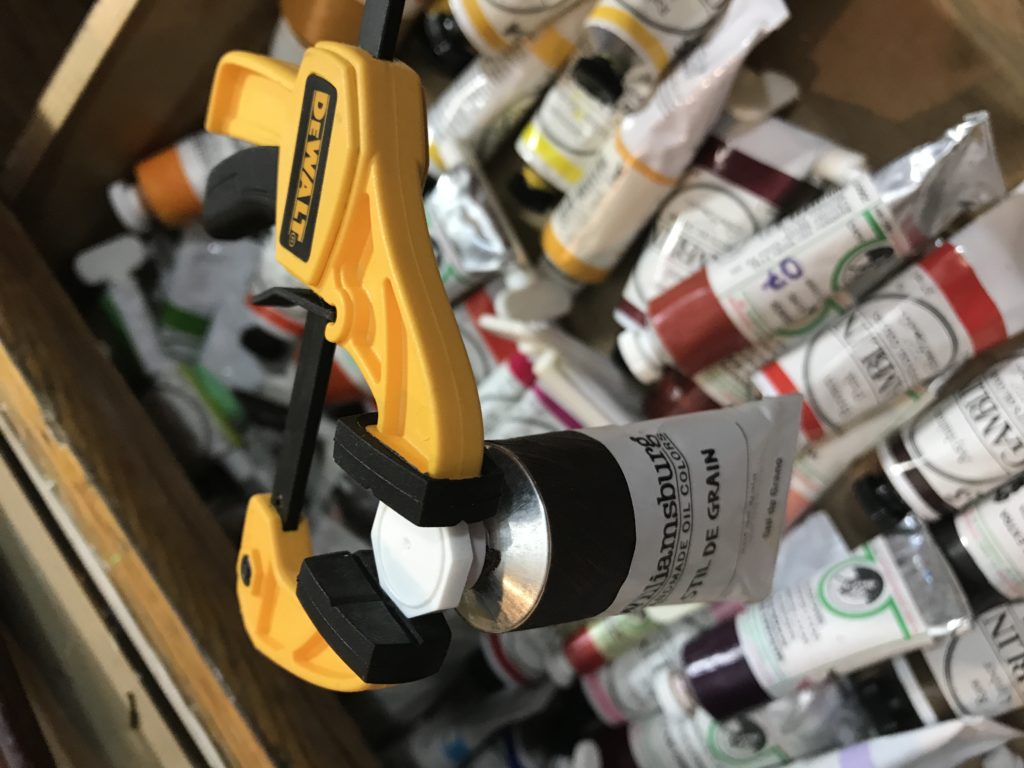
Clamp removing paint tube cap
Sometimes you just need a break. I often forget that living a life is the best way to feed my art. There really is nothing like doing something you love and just not doing anything at all. This past weekend my husband and I managed to pack in a myriad of experiences – wonderful food, music, beautiful weather, time with friends, listening to a speaker sharing about life and what spiritual living means (we laughed, we cried, and it literally did become a part of us), took gloriously long naps, and woke up this morning truly rested in mind, body and soul. I even found time for solitude and just pure thinking and writing – which is another thing that gets neglected all too often.
In a way I am posting this as a reminder to myself that I have to stop, fill the well, connect, and just BE.
And get in a good dose of Matthew Sweet. It was good to know that I knew every word…

Matthew Sweet
This experiment has really thrown me some curves. One thing is I do expect far too much of myself. The other is I am surprised by what I can accomplish. I was able to bring almost fours paintings to an almost complete state of finish. I am also finding that I am building on each piece and I will be going back to tweak and change as I advance on each one. working like this keeps up an amazing momentum, a constant feedback on what I need to improve. I’m far less attached to the one image I am working on as I have five others all staring at me, telling me “oh never mind THAT one – I’M the awesome one!” It takes the pressure off of THIS piece being my make or break. I have to say I really love working this way. The only drawback is that all of the pieces are small. I have a feeling I will be hitting Home Depot at some time and building a board on which I can attach larger canvases. This easel (It’s a Hughes easel) will allow me to lift and lower the paintings as I need – I have almost six feet of height on this easel to use!
Hmmm… Do I paint? Or do I go shopping…
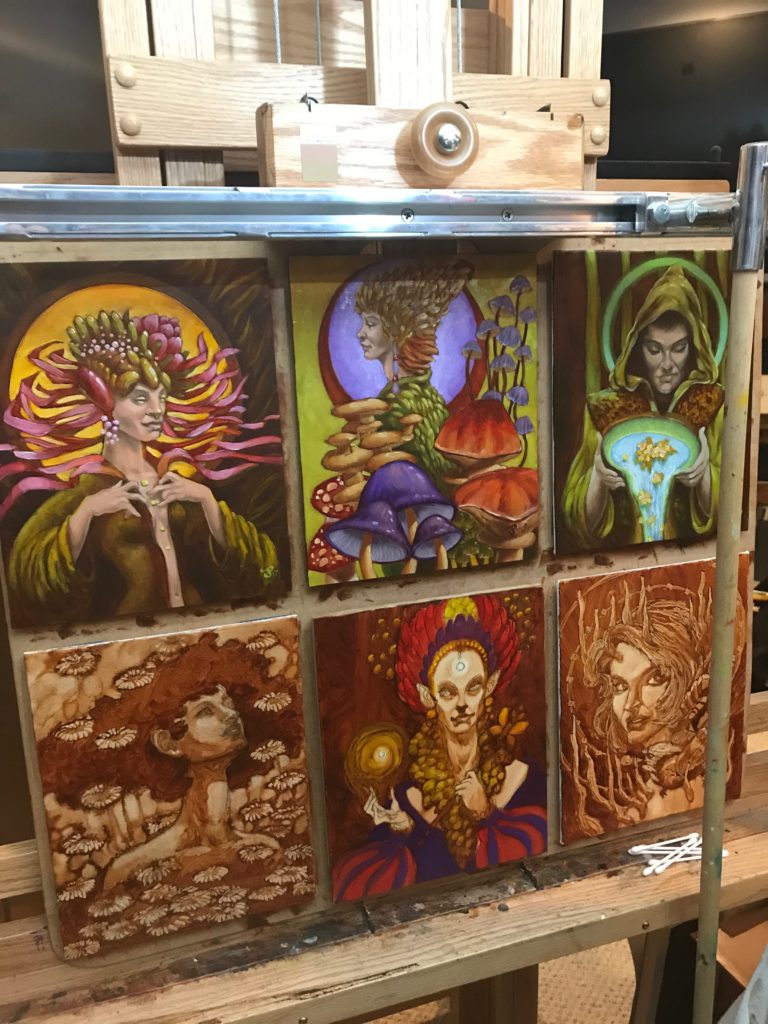
Multiple Paintings Second Pass
It’s funny how you can be a practicing artist your entire life and it never occurs to you to do something so simple as to work on more than one piece at a time. I was completely taken by surprise when reading about one of my favorite artists that they worked on 30 paintings at one time. Why I missed that this is a common practice is one of my personal quirks I find funny. I was teased frequently for being “functionally fixated” and with reason. Despite my entertaining inflexibility I have learned many wonderful new ways of doing things and working on multiple paintings at one time is a new way of doing things for me. I have to say I LOVE IT! I had the idea of setting up a drawing board with velcro on it that I could attach a number of small boards to and it has worked beautifully. In two days I managed to do the underpaintings for 15 paintings. Each one was very much paid attention to – yet it kept me moving at a better pace than I usually do. I found my mark making getting more relaxed and confident, I started playing more and I jumped from piece to piece. This worked beautifully for the sketching, tracing and redrawing and underpainting stages. Now the challenge will be the final painting stage. I’m interested to find out what will happen with the pressure of having six different images waiting for their own specific emotional aspect being brought to life. So far this has been both fun and I’ve found a new depth in image making.
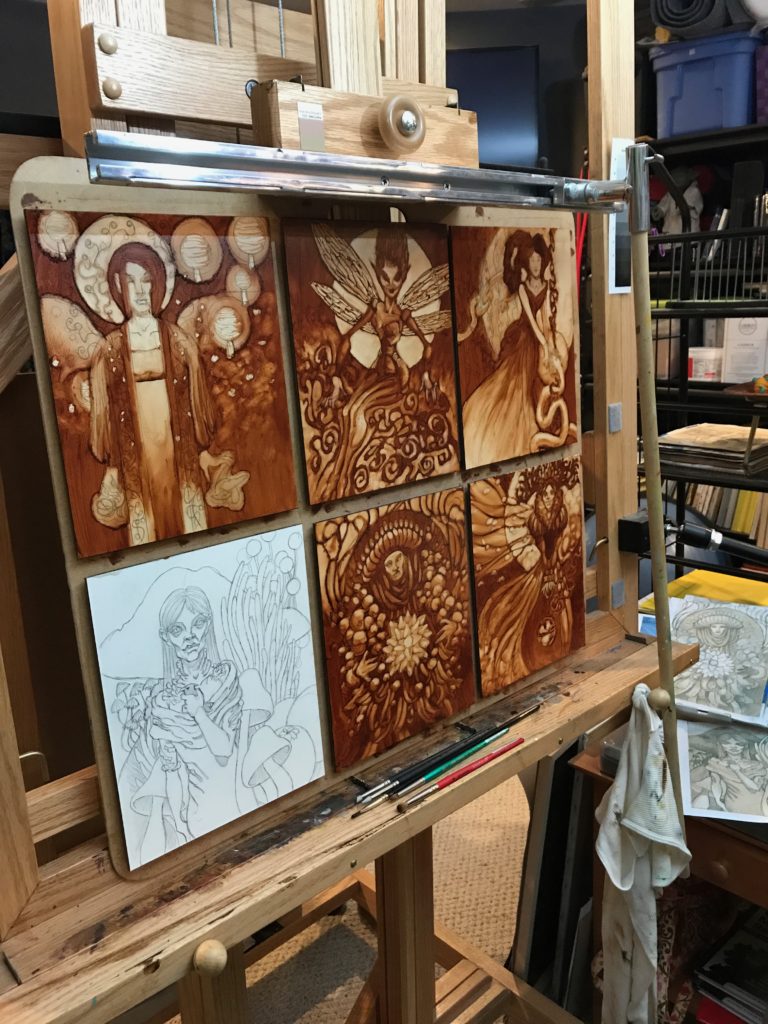
Six Painting Setup
Just to show a bit of process and how a sketch is a placeholder for drawing I’ve got an example from the series I am working on for Illuxcon. I have prints of the original sketches taped to the boards I am doing the paintings on. the second photo shows the redrawn images on the boards (I still have some looseness in the background to be filled in with paint). Basically I use the sketch as a map to locate the main composition and then, using reference, I redraw onto the board and push the forms, anatomy and shapes to a more finished form. This is the part I actually enjoy the most after the initial idea generation. Drawing something and watching it come to life is truly one of the greatest pleasures. The next step after sealing these will be to do the underpainting which is for me is taking the line drawing and turning it into a tonal drawing. I’ll share that stage in my next post – I have some really fun ideas I want to try out this time!
-
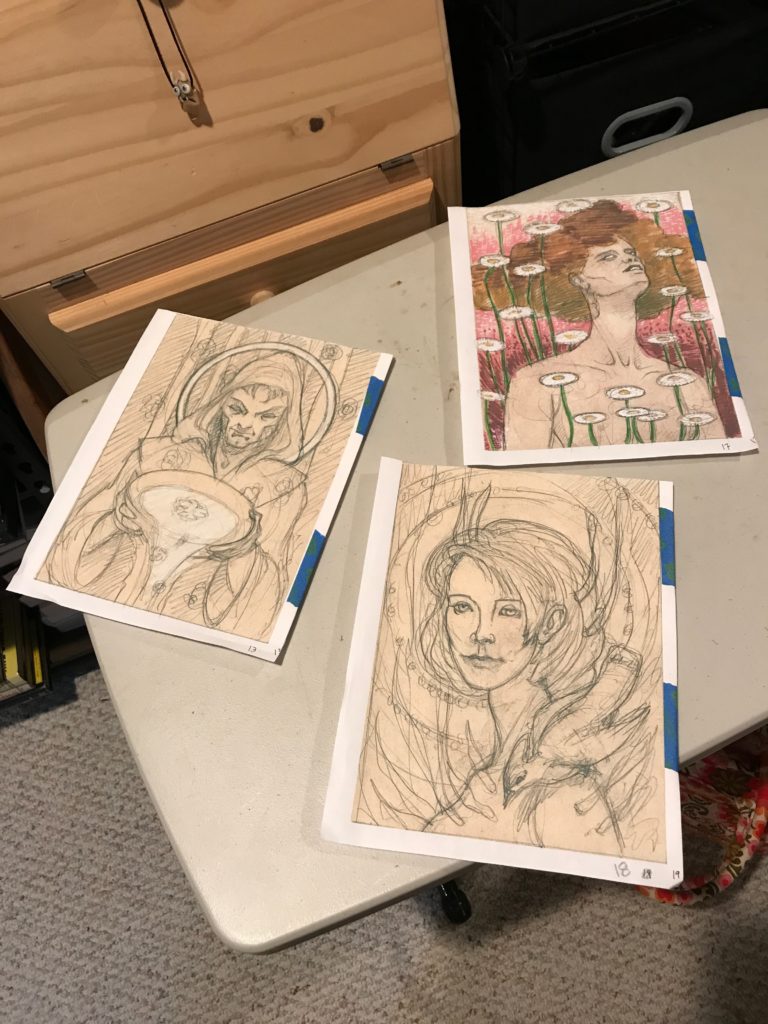
-
Sketches
-
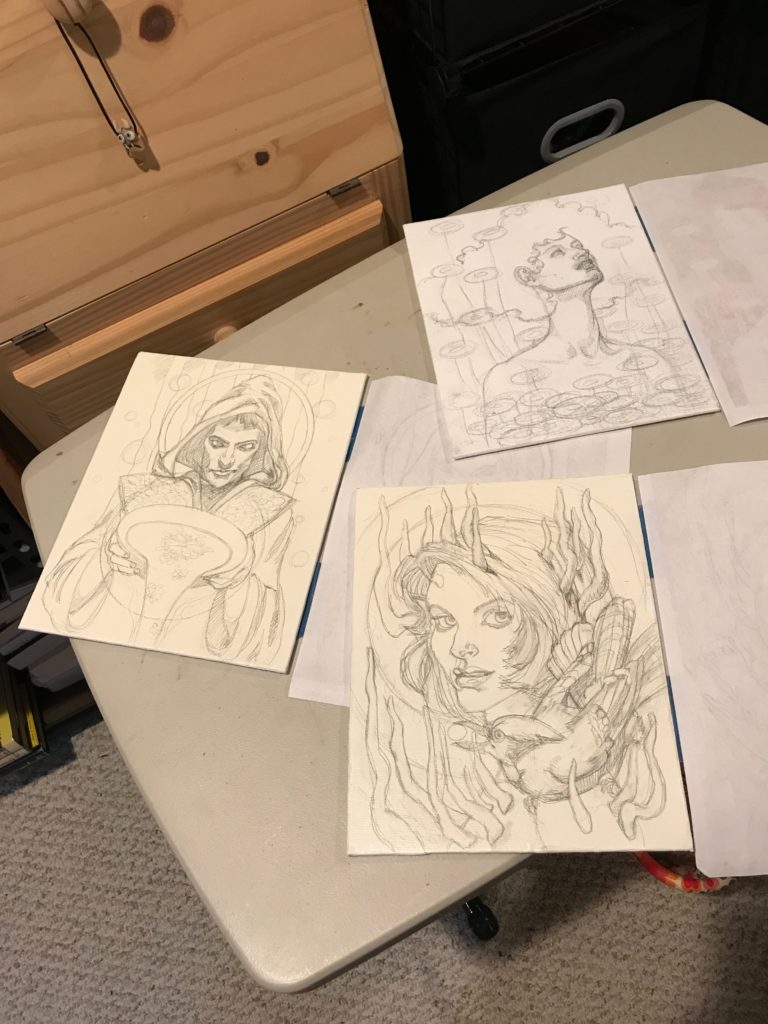
-
Drawings









